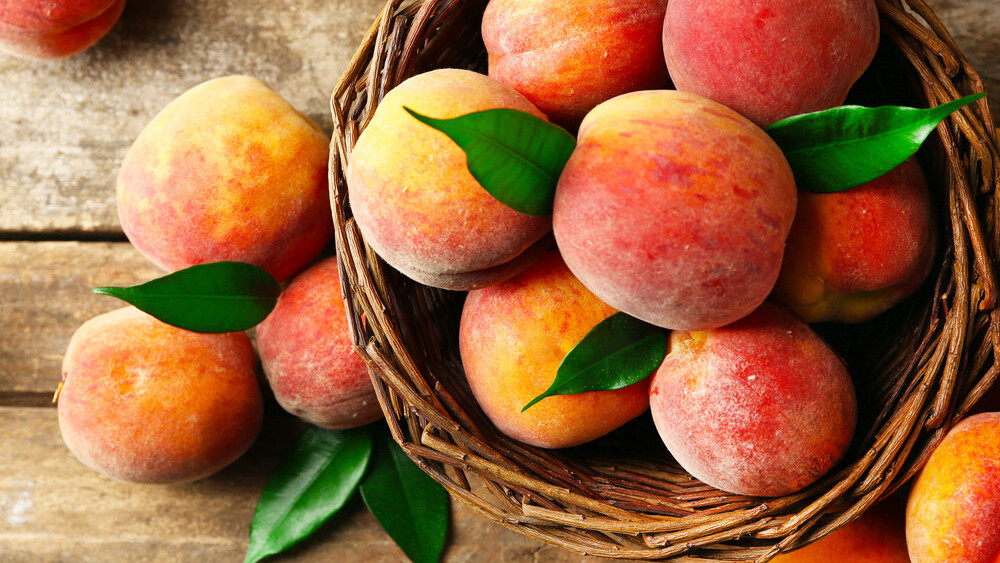
Every so often a new app will suddenly appear on App Store and get everyone talking.
The latest app to do this is Peach – a new social networking app from Dom Hofmann, co-founder of video-based social network Vine.
Peach is “a fun, simple way to keep up with friends and be yourself,” and has exploded onto the scene – breaking into the top 10 Social Networking apps in the App Store already (there’s currently no Android version).
We decided to drive below the surface and investigate how Peach works, as well as share a super-early case study on how Product Hunt has been using the platform to engage with their audience.
Let’s get started! ?
How Peach works
Before we dive into how to use Peach and how Product Hunt has built an audience on the app, I first wanted to share a quick overview of what Peach is and how it works.
The basics
Peach encourages the easy sharing of video, images, gifs and even user-created drawings. The real differentiating factor in the app are Slack-like commands called “Magic Words” (more on these just below).
Like Facebook, users have “friends” on Peach and you must be friends with someone to “like” or comment on their posts.
Users can also interact with each other via a multi-faceted interaction menu, similar to Facebook’s old Poke feature, friends can wave, boop and send cake to each other.
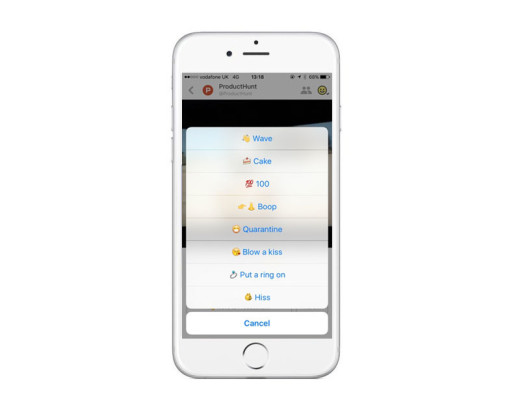
Another key difference between Peach and other networks is the lack of a continuous scrolling feed. Instead, Peach shows a list of when friends have posted something and users must click to see the full post.
Magic Words
Peach is centered around “Magic Words.” These words trigger different types of posts within the app – similar to how commands work within Slack.
Typing “weather” for example will add the weather to your update and “shout” will make your text larger and more eye-catching.
Some of the magic words are a little quirkier, using “song” works like Shazam and identifies the song you’re currently listening to and “move” will share your fitness data (such as steps taken).
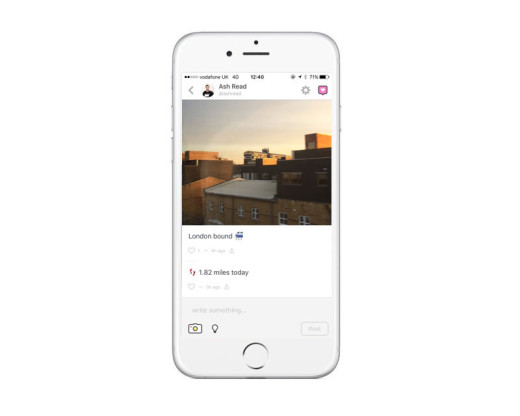
Here’s a full list of Magic Words:
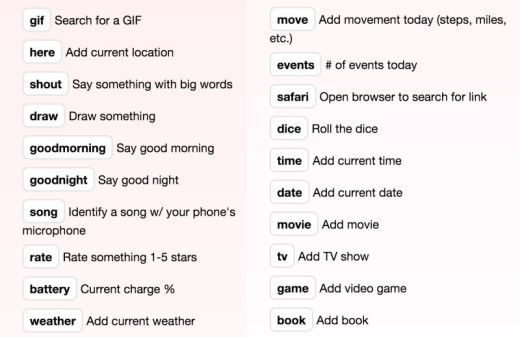
How Product Hunt is using Peach to engage with their audience
In order to give you an overview of how Peach works, we teamed up with Niv Dror, who runs social at Product Hunt, to give us the lowdown on what got them excited about Peach and how they’re using the platform.
First impressions
First impressions are hugely important with new apps and social networks and Peach seem to have nailed this aspect, as Dror explains:
At first it reminded me of a version of Snapchat Stories, in the way people discover new posts. But in a way, it also feels like Slack in how quickly you can interact and how links get embedded.
What I was most impressed by is how smooth, (delightful is probably the right word) it is when you most post an image or record a short clip – which loops and is six seconds in length like Vine. It just feels native to whatever piece of content you want to create (which is very important).
Dror also explained how the on-boarding flow really got the team at Product Hunt excited about the app:
I signed up and got my first name @niv which was fun, but the way they walk you through the magic words in a conversation format showed me what Peach is about. I was so impressed by it that I signed-up @ProductHunt for a Peach account and recorded the on-boarding.
You can check out the smooth on-boarding process in the below video:
We just signed up to :peach: and their on-boarding is magical :sparkles: https://t.co/wzPeljRLcN https://t.co/fA9wAhCgQ2
— Product Hunt (@ProductHunt) January 8, 2016
How does Peach’s friend feed work?
Like many other social networks and apps, Peach’s focal point is a feed of content create by your freinds posts:
The friend’s feed is a lot like Twitter, in that new posts go to the top of the feed. What’s really clever is how they went about previewing what the content is about. So, for example, if you just post an image, a GIF, or a video with no text it will just post that
and if you include text it will show the first few words, so I’ve started using that in a way that communicates the most exciting part at the start. The post preview in-feed is very short, but shows just enough content to entice friends tap and see the whole thing, which we’ve found usually leads to more likes and comments on posts.
Here’s how my friend feed looks:
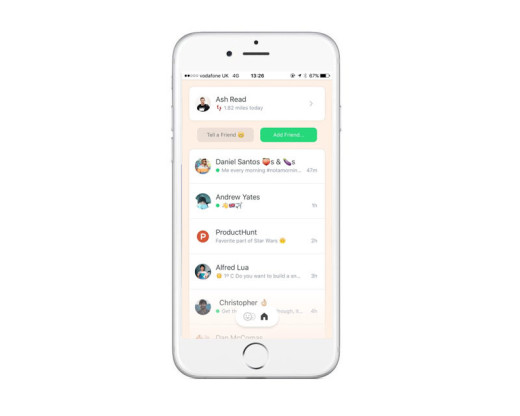
It’s also fun to see how magic words get embedded, so if you use the ‘song’ magic word, it will show the song title and the ? emoji, if you use the ‘battery’ magic word it will show ?44 percent, etc.
3 ways to grow an audience on Peach
Product Hunt has already built a good sized, highly engaged following on Peach. When speaking to Dror I was interested in how they’d approached that early growth – both from within Peach and also through utilizing their following on other platforms. Here’s how they’ve done it:
1. Friend-of-friends feed
Peach has a friend-of-friends feed that allows you to see what some friends of friends are posting. Dror explained that appearing regularly in this feed already feels like a great way to build up your friend list:
I quickly realized that whenever I would post something from the @ProductHunt Peach account we’d get five to 10 new friend requests — which is how I found about the friend-of-friends feed. Each new posts brings you to the top of your friend-of-friends feed, the more friends you have, the bigger your extended network. So far that has been the biggest driver of new friends to the PH account.
2. Utilize existing audiences
Outside of the Peach app, Product Hunt has also been using their existing audience across other platforms to build their Peach following:
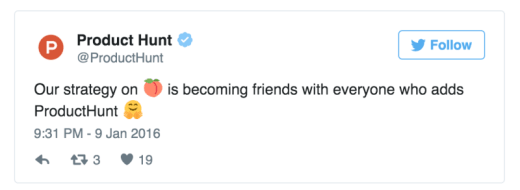
From this tweet [above] a bunch of people added us, and I’ve followed up on that indirectly with this tweet once. Interestingly though, most of the growth has been right from the Peach app — spending hours and hours accepting people who add us, posting all weekend, and interacting with everyone. That got me to the point where I wanted to highlight Peach at the top of Monday’s Product Hunt Tech Digest email, which led to a lot of people adding Product Hunt throughout the day from the call to action.
Here’s the Digest email Dror referes to:
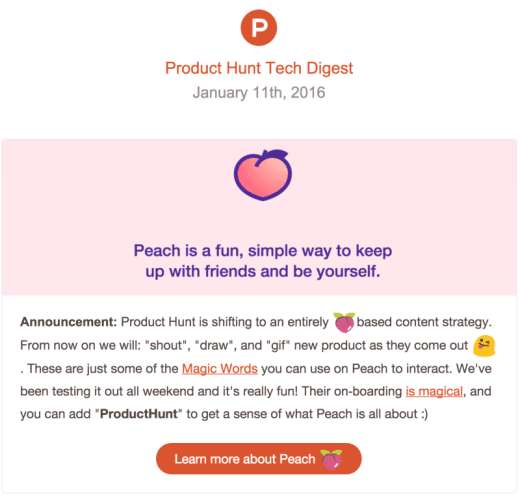
3. Offer exclusive content
Product Hunt has also been using exclusive content as a way to drive people from platforms like Twitter and Snapchat into Peach:
I’ve been combining Peach with the other big app everyone is talking about: Stolen. At first I did a Stolen Code Giveaway on Peach (instead of our Snapchat) and then I casually posted that if people want us to ‘steal them’ on Stolen just let us know their Twitter handle as a comment on our Peach post. [For context: Stolen is a game that allows you to collect and trade your favorite people on Twitter.
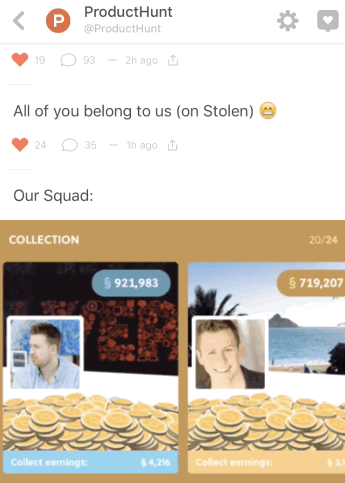
This generated an influx or new friend requests on Peach and plenty of engagement:
You can see at the top [of the above gif], that post has 93 comments and the one below is a continuation of that. After someone had commented I went straight over to Stolen and ‘stole’ them, that delivered instant feedback – one minute they said they wanted us to steal them, and a minute later getting a notification that it’s done.
What’s engagement like on Peach?
Attention is essential for any social network to succeed – especially if brands are going to start investing time and resources into the platform. For Peach, the early engagement looks good:
Engagement is the thing I was most surprised by — it’s higher than what we see on the @ProductHunt Twitter account (which has 111k+ followers). I’ve already seen the some of the Product Hunt Peach posts pass well over 100 comments, which is just awesome.
One top tip Dror shared to boost engagement was breaking content up into two or three short posts instead of one longer one:
I’ve found that breaking up your posts into two to three sections works very well on Peach. It started as away of optimizing for what shows up in the feed-preview, but it’s also just fun. So by breaking it up into “Fill in the blank” and “My favorite emoji is____” I appear twice in the feed instead of once. The two to three part question/statement flow really well and it highlights what you want your audience to focus on.
Here’s an example:
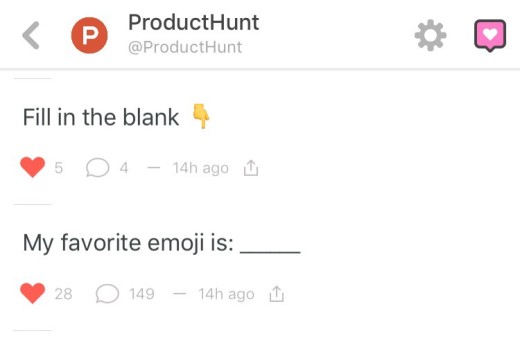
You can see the audience were keen to engage with the content even before the main “fill the blank” post was shared.
Could Peach become a useful tool for brands?
One question that arises with every new social network or app, is whether it will work for businesses. At this early stage, Product Hunt believes so:
Peach can be a great way to build and interact with your community, and I’ve seen evidence that it can also work as a distribution channel. I’ve seen direct real-time traffic back to Product Hunt from posting a link on the Product Hunt Peach account. When I saw that in Google Analytics I got really excited because it showed me that it can be used as effectively to drive traffic, in a way that Instagram and Snapchat aren’t as natural at (because you can’t link). I know some brands are on it, but the only one I’ve seen mention it is MTV.
Peach feels very much on trend in the current social space where apps are moving move into supporting native multimedia content. Twitter and Facebook have both recently started to support gifs and Instagram have started supporting video and launched Boomerang to help users create live photos.
Over to you
Huge thanks to Niv Dror and Product Hunt for sharing their Peach insights with us here! If you’d like to add Niv or Product Hunt on Peach you can find them @Niv and @ProductHunt – if you’re on the Peach already, give them a request ?
I am mostly focusing on building out the @ProductHunt :peach: content strategy, but you can add me on :peach: @niv if you like :v:
— Niv Dror (@Nivo0o0) January 10, 2016
I’d love to hear your thoughts on Peach.
Have you downloaded it yet? Any first impressions? Do you think it’ll be a long-term success?
Share in the comments, I’m excited to join the conversation with you!
➤ This post originally appeared on Buffer
Read next: New social network Peach is being taken over by people using fake celebrity names
Get the TNW newsletter
Get the most important tech news in your inbox each week.